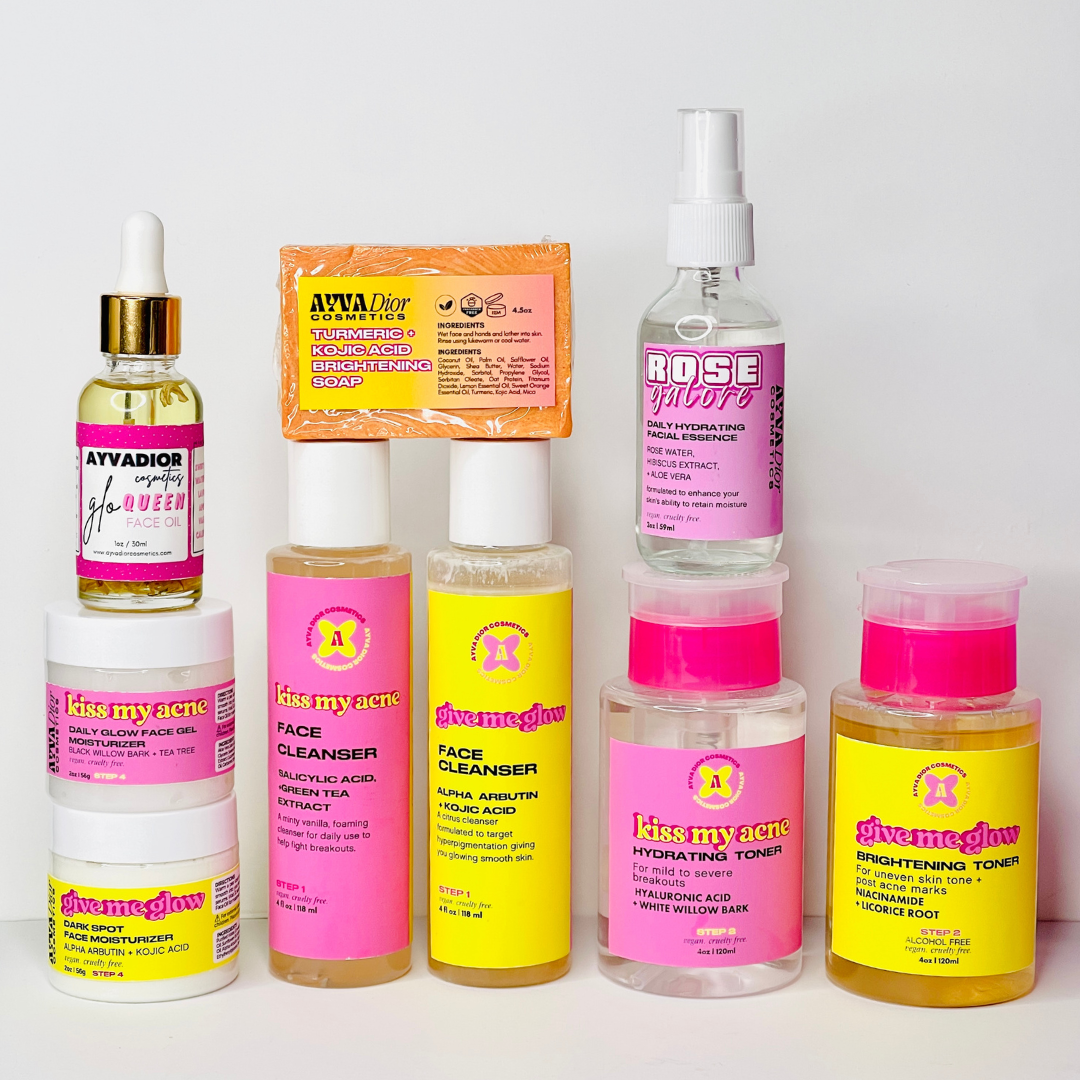Unboxing your Ayva Dior Cosmetics goodies? SO Exciting! But hold on, let's talk about patch testing—your skin's secret superhero.
Trying out new skincare products is an exciting adventure, but it can also be nerve-wracking. No one wants to risk unwanted breakouts, irritation, or allergic reactions. That's where patch testing comes to the rescue. In this blog, we'll delve into the significance of patch testing, why it's important, and provide you with a step-by-step guide on how to patch test effectively.
Why Patch Test Skincare Products?
1. Avoid Unwanted Reactions:
Patch testing allows you to identify potential allergic or adverse reactions before applying a new product all over your face. By testing a small area of skin, you can catch any negative responses and prevent further damage or discomfort.
2. Determine Sensitivities:
If you have a history of sensitive skin or are prone to rashes and itching, patch testing can help you identify specific ingredients or products that may not be suitable for your skin. It's an invaluable tool for personalizing your skincare routine and avoiding potential triggers.
3. Not All Skincare Ingredients are treated equally. Are you Introducing a new product to your skin? Even if you're ingredient-savvy, brands differ in strength and formulation.
How to Patch Test Skincare Products:
Step 1: Choose a Patch Test Area:
Opt for a small, discreet area such as the inside of your forearm or behind your ear. These areas mimic the sensitivity of your facial skin.
Step 2: Apply the Product:
Take a small amount of the product and gently apply it to the patch test area. Avoid overlapping with any other products during this process.
Step 3: Observe and Wait:
Allow the product to sit on your skin for the recommended time specified on the product's instructions. Be patient as reactions may take time to manifest.
Step 4: Monitor the Skin:
During the patch testing period (typically 24 to 72 hours), closely observe the patch test area for any signs of redness, itching, swelling, or irritation. If any adverse reactions occur, remove the product immediately.
Step 5: Assess the Results:
After the testing period, evaluate the patch test area. If your skin shows no signs of a reaction, it's likely safe to incorporate the product into your routine. However, if you experience any discomfort or visible reactions, avoid using the product to protect your skin's health.
Patch testing is an essential practice to ensure the well-being of your skin. By investing a little time and effort upfront, you can prevent potential skin issues and make informed decisions about the products you introduce to your routine.
Remember, patch testing should be performed each time you try a new product, even if you have used similar ingredients before. Our skin is unique, and variations in formulations and concentrations across brands necessitate this precautionary step.
Prioritize the long-term health of your skin by embracing patch testing as a fundamental part of your skincare journey. Discover the products that work best for you and enjoy the benefits of a personalized and tailored routine. Your skin will thank you for it! Got questions? We're here to soothe your worries and unlock the secrets of skincare success.


